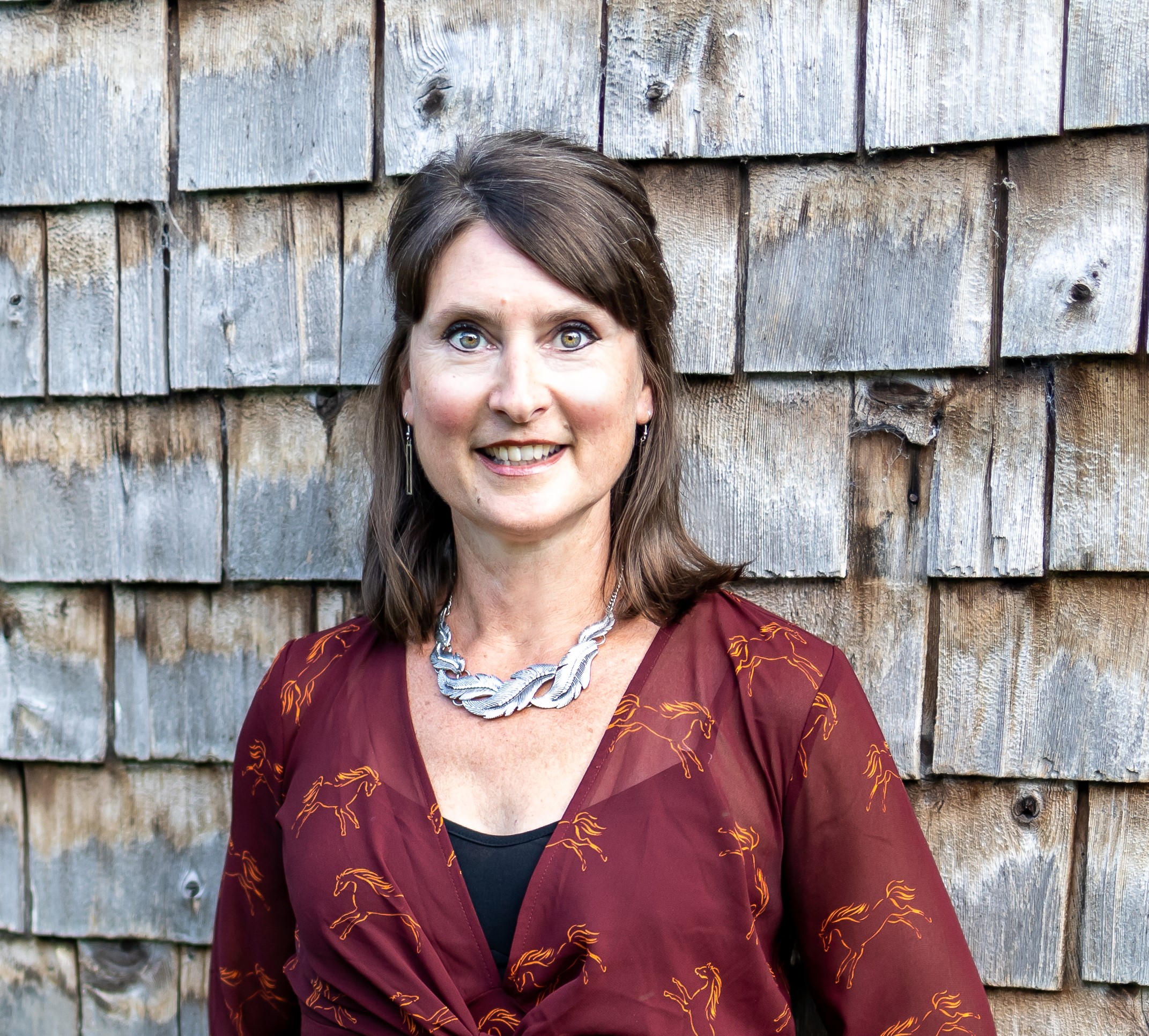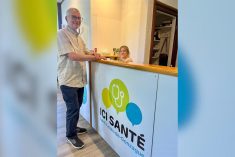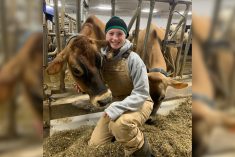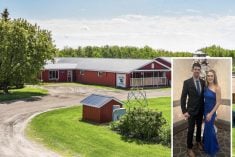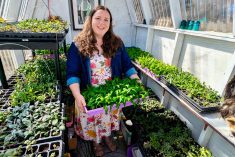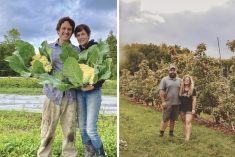Here’s how one Quebec dairy farm decided to take the proverbial bull by the horns and make their farm a vertical integration success despite the constraints of the industry.
– April Stewart, CG Associate Editor
Too often it seems we never hear the words “disruptor” and “Canadian agriculture” used in the same sentence. When we’re thinking about hot new business concepts like disruption, Silicon Valley is more likely to come to mind with all of its tech businesses and rule-breaking entrepreneurs. And what may be least likely to be thought of is a seemingly sedate industry like agriculture, or especially one of its quiet corners, like dairy.
Read Also

What to consider when setting up farm-related business ventures
Things to consider before launching a farm-adjacent side business.
Yet if what we mean by a disruptor is this — someone who re-imagines how things get done in the business world and who gets the money for doing it — then here’s a farm a half hour north of Montreal at Ste-Anne-des-Plaines that is asking us to rethink just how far Canadian agriculture can go.
If this isn’t disruption, nothing is.
The farm we’re talking about is called Ferme Vachalê/Lait Charbonneau, and it dates way back to 1634 when Olivier Charbonneau was the first European to farm what is now the island of Laval.
Today, incredibly, this family farm is in its 12th generation — a generation that includes co-owner siblings Luc, Julie and Mathieu along with co-managers Jocelyne Prud’homme and Marie-Andrée Raiche (married to Luc and Mathieu, respectively). There are also the 10 kids in the up-and-coming 13th generation, plus several farm and store employees. And, of course, the grandparents.
Combined, they milk 160 cows two times a day with eight double automatic take-off milkers, 16 cows at a time in barn space they’ve expanded twice since 2009, with each addition big enough to hold an additional 40 cows.

They also grow 435 acres of forages, cereals, corn and soybean in an eco-responsible business that makes every effort to reduce their environmental footprint. For example, they find ways to limit diesel and pesticide use, their feeding program reduces methane output from the cows, they use cover crops and windbreaks to build soil health, and they use cropping systems like direct seeding to encourage earthworms and soil structure.
The farm philosophy is based on their mother’s term “reasonable farming” (or, as she would say, “l’agriculture raisonable”), which means that Mother Nature does a pretty good job on her own; we just have to help her along by doing “reasonable” things, i.e. things that on that particular region and farm will complement her natural forces and cycles.
Thinking beyond
Their business management, by contrast, is creating its own sense of direction, unafraid to go beyond the expected as the Charbonneaus become disruptors, taking charge of slim profit margins by going vertical and by processing milk on-farm to supply their retail dairy store, Lait Charbonneau.
Launched in 2022, the storefront and milk processing plant are just steps away from the main farm.
In a way, it’s a back-to-the-future concept for the family. Until 1972 the Charbonneaus handled the evening milk run themselves, delivering milk door-to-door in the community.
But if the concept isn’t new, the reasons driving it are. Or, at least, they’re more intense.
When we meet, Marie-Andrée Raiche clicks through a list of those reasons.
“The farm economy is difficult,” says Raiche. “Input costs are too high. We want to receive a fair return, not the crumbs we do for the work we do while everyone else down the supply chain is making money.
“We needed some leverage, a way to control our own business costs and profits. We have 10 kids coming in the next generation. And since the end of our milk run, we always wanted to have the opportunity to be that contact point with customers again.”
They also knew they wanted to be part of the agro-tourism scene (“because let’s be honest: that’s where the money is,” says Raiche) and that the business would have to be completely transparent about how it operates and how products are made.”

Finding the right advice
The family has many ideas for future growth, but they pace themselves and work in stages. “We need to be successful quickly because there are always bills to be paid,” Raiche jokes, “but at what speed? You can be successful in 10 years or you can be successful in one — but you need to be able to deliver. So, yes, you can ‘go fast and break things’, but to a point. For example, the quantity of milk we’re producing every day means we can deliver, but we need to grow at a reasonable pace or we’ll kill ourselves with work.”
They visited about 15 other dairies when they were in the research stage of their store project — and everyone had advice to share. “The thing about advice,” says Raiche, “is that it’s that person’s experience, something they’ve lived through and so maybe that piece of advice helped them. During our visits, most owners were generous and shared a lot of advice. Some of it was not for us. Some of it we brushed off and shouldn’t have. Some of it turned out to be very helpful. But what advice is good for you always depends on what you want to accomplish, what kind of image you want to portray, what kind of customer you want to attract.”
They got good marketing advice too. Projecting the right image can be a challenge, they found. “We struggle sometimes with figuring out how to showcase our products without being too showy, too market-y, too ‘not us’,” says Raiche. “There’s competition out there and we think our products are the best, but … if it’s not marketed in the right way to those who don’t know our products, it can be the best product in the world, but no one will be interested in trying it to find out.”
Raiche, meanwhile, has emerged from the process with some thoughts of her own. Her best business advice? “Follow your heart. Listen to your partners, your team, your customers. When you’re overtired, take a break, step back. It’s not easy, but you need to pace yourself and understand that you’re only human. And build big! Everyone said we would have to expand about two years after opening and it hasn’t even been two and we already know that we’re going to have to get bigger.”
In 10 years they want to be able to process all milk on-farm into products for the store. Thanks to the advice they received while visiting other dairies during the planning stage (build big!), they “built with the intention to destroy” — meaning that all the plumbing, electrical, etc. in the processing section of the building were designed to be easily added to or modified. The store will help pay for the new barn addition in 2025 and those cows will help finance the processing facility’s growth.
“It’s very exciting — especially when you see the face of a customer who’s tasting your product for the first time and their eyes roll back in their head,” Raiche beams. “To see the results of all your efforts, that’s priceless.”
Making the decision
There’s a big unanswered question, however. How does a family come to big decisions like these, with everyone on the same page? “We all sat down with some beer and wine and a legal pad and a pen, and we listed everything everyone wanted,” Raiche says.
But she also agrees there’s more to it than that. “We had to deal with our expectations — and eventual client expectations — and so we had to also work out, okay: how are we going to realistically do this? Because we are five people with five visions for the business.”
They knew they wanted to be as transparent as possible so customers feel confident in what they do on-farm and in the store, so it turned out one thing they all immediately agreed on was placing a window in the store that looks into the processing room so customers could see how the products are made.
The farm also hosts hundreds of Quebecers each year at the annual Portes ouvertes (“open house”) event in September, organized by the province’s agricultural union. “This year, half the village is reserved for event parking (the farm is metres away from town limits) and we’ll have 50 people working here that day,” Raiche says proudly.
“Before our store opened, the average length of a visit was about an hour and a half. Now it’s three to four hours.”
Each co-owner and co-manager is responsible for a part of the business, but major decisions or big purchases are made as a team. “Someone can’t just go out and buy a $200,000 tractor if they feel like it,” says Raiche.
“There must be boundaries and respect for each person’s area of responsibility.” Luc manages crops and machinery; Julie handles financial tasks and manages the herd; and Mathieu takes care of human resources. Raiche manages the store and its 12 employees, and Jocelyne develops and makes most of the products and monitors quality control.

The grandparents are still involved as is Raiche’s 15-year-old daughter, who is interested in taking over someday and works in the (delicious!) on-site food truck for the summer.
But a business is a business even if — sometimes especially if — you’re working with family, so setting up roles and responsibilities helped avoid confusion and frustration.
“Our biggest hurdle was figuring out who was going to do what. We all want to contribute to the business and do our best,” says Raiche. “But we all have different fields of interest and expertise, and also different ways of thinking. One of the first things we did was make a list of what each person was responsible for to ensure that work wasn’t done twice, or something didn’t get done because it was assumed someone else would do it.”
Raiche’s face brightens as she adds: “It’s not a secret, okay … It’s called talking to each other. You know, communicating.” Compared to previous generations, she thinks more people are discovering how to listen and communicate, and that it takes all kinds of people to run a business. “Even when you are co-owners, some people are better at managing the day-to-day, others are more visionary. But you can’t just be a visionary and forget the day-to-day. We need to use everyone’s skills to be able to function. It takes a variety of perspectives to make a healthy whole.”
And remember there will be bumps. “It’s a business, so there’s always something to be anxious or worried about,” concedes Raiche. “My advice is to stay calm … There’s always a solution. You might not see it at first, but there is one.
– This article was originally published in the October 2023 issue of Country Guide.

